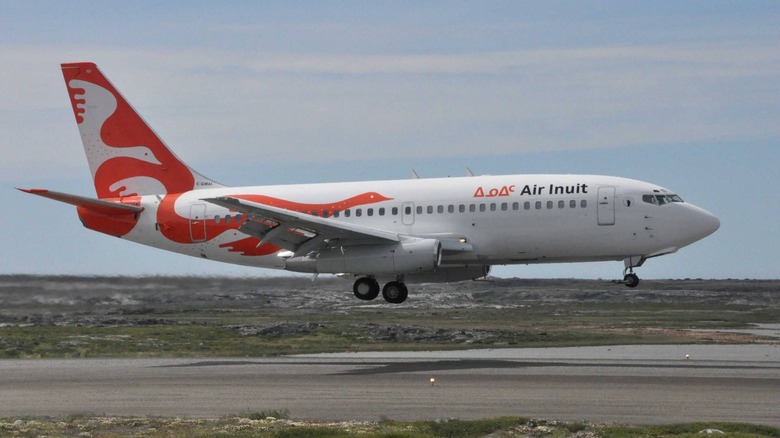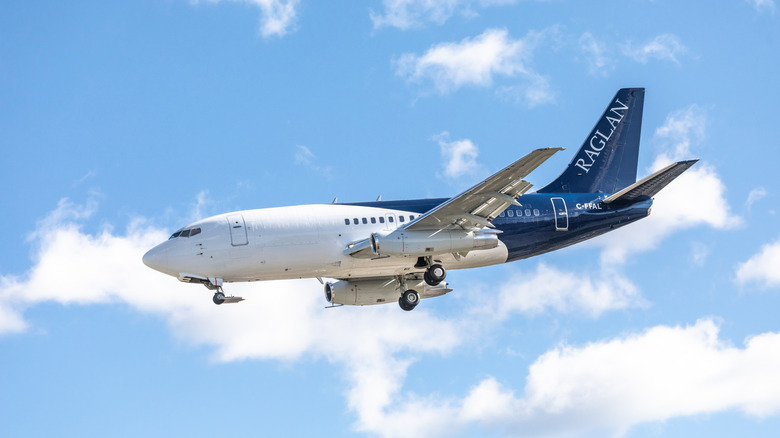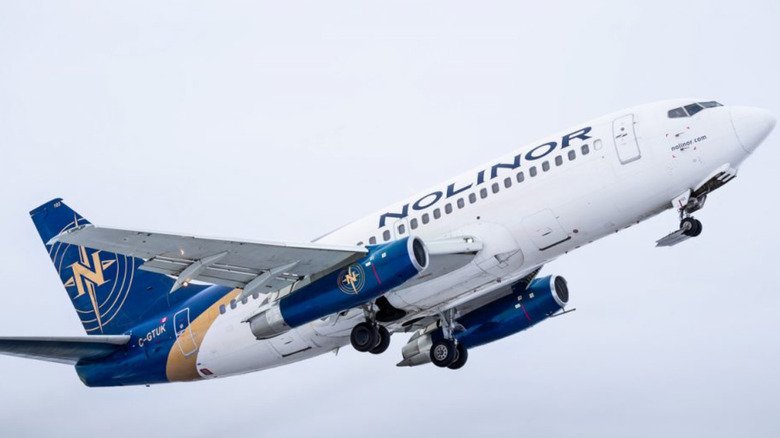What Is A Gravel Kit And Why Do Some Jets Have Them?
Following a string of tragic aviation disasters, flight safety issues have moved to the front of America's infrastructure debate. In particular, federal scrutiny of the Federal Aviation Administration has prompted some to ask whether airplanes are still the safest way to travel. Even the likes of Hillary Clinton and newly appointed Transportation Secretary Sean Duffy have argued over the merits and direction of this scrutiny on X (formerly Twitter). With Elon Musk's DOGE (Department of Government Efficiency) now purportedly reviewing the FAA's safety procedures, many passengers are asking whether airlines have taken all the necessary precautions to ensure they get from point A to point B without a hitch.
Passengers worried about the safety of their flight have many factors to consider. However, one aspect of the safety debate that passengers take for granted is whether the aircraft is equipped for the runway it is landing on. While most modern runways are made of rigid pavements like asphalt or concrete, airplanes can land on various surfaces, including grass, water, and even ice. One question to consider, however, is how these runways might affect the plane itself, with some materials like gravel posing the potential for long-term damage to an aircraft.
This is where a gravel kit comes in. Originally designed in the '60s to protect jetliners from the dangers of landing on unpaved surfaces, these modifications were a critical safety feature of major commercial aircraft like the Boeing 737. But what exactly did these modifications do? And are they still in use, or merely a blast from the aviatic past?
What is a gravel kit and why was it needed?
Common in isolated regions, particularly those with sub-zero temperatures, gravel airstrips are a popular alternative to more expensive paved runways. For areas with minimal air traffic or budget, gravel strips have become an effective means of bringing air travel to a region where construction of a paved runway may be burdensome or even impossible. While they require more maintenance than asphalt runways, repairs are relatively cheap and easy, making gravel a smart option for low-traffic airports short on money.
However, gravel poses an acute problem for aircraft, as the rocks, dust, and debris kicked up by their landing can damage vital engine parts. To prevent this, manufacturers made the gravel kit add-on. Typically, these kits were designed with smaller runways and airplanes in mind. But in 1969, Boeing manufactured a gravel kit for its famed 737, enabling its commercial jetliners the ability to visit more remote locations.
What came in a gravel kit?
Boeing's unpaved strip kit came with several add-ons designed to protect the engine, fuel tank, and gears of its 737s. The primary feature was a set of deflectors added to both the landing equipment and the nose gear to prevent rocks from damaging the underside of the aircraft and flaps. Also on the landing gear were metal shields that prevented damage to the plane's brake cables and hydraulics. To prevent rocks and gravel from shooting into the engines, the gravel kit used vortex dissipators to blow air from the engine down below the opening, where vortexes typically form due to differences in air pressure. By disrupting the air pathways, a dissipator prevents debris from being sucked into the engine. If your first thought in reading that is the "no capes" monologue from "The Incredibles," then you are on the right track.
Gravel kits also necessitated the aircraft reinforce its flaps, apply Teflon paint to the underside of the wings and fuselage, and equip an additional light. Such modifications changed the craft's flight procedures, necessitating lower speeds for take-off, landing, and gear operation, as well as limits on the aircraft's reverse thrust. To deploy the kit, several runway conditions needed to be in place. Typically speaking, the runway needed to be without standing water, without bumps over three inches high, and at least 6 inches of surface material. To mitigate poor runway quality, the kit suggested reducing the airline's tire pressure for a smoother landing.
Are gravel kits still in use today?
Originally manufactured for the first generation of the famed 737 (i.e. the 100 and 200 models), Boeing declined to outfit its newer variants with gravel kits due to reduced visits to unpaved runways for commercial aircraft. Because of this lower demand, manufacturing the kits and their replacement parts became an expensive proposition with little upside. Other manufacturers of large commercial aircraft, such as McDonnell Douglas, have also discontinued production of these kits. However, that is not to say that the gravel kits have disappeared despite these early models falling out of style.
At one point, over 2,000 operations per year utilized these specially outfitted 737s to reach remote areas. Largely operating in Canada and remote Alaska, airlines like Alaska Airlines, Canadian North, Air Inuit, Nolinor, First Air, and Air North used these kits for passenger and freight flights. Several carriers servicing remote areas still employ these original gravel-fitted models, although the numbers are admittedly dwindling. Nolinor in particular remains committed to these aircraft, deploying a fleet of 16 Boeing 737 200s as of last year. According to their website, these aircraft can be used to transport up to 119 passengers or up to 30,000 lbs of cargo.
While gravel kits have lost their popularity for commercial airlines, they continue to be a valuable tool for smaller aircraft to visit remote locations. Textron Aviation, for example, added a gravel kit to its Cessna SkyCourier in 2023. In doing so, Textron ensured that its two-engine turboprop can "operate in some of the world's most demanding environments." So, the next time you need to visit the remote wildernesses of the Yukon or Arctic, take to the skies and make sure to bring a gravel kit with you.



